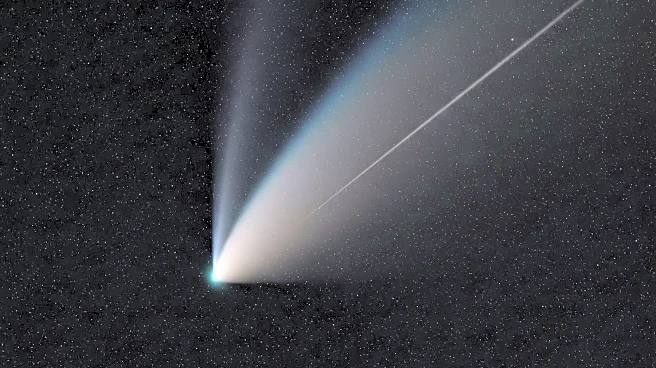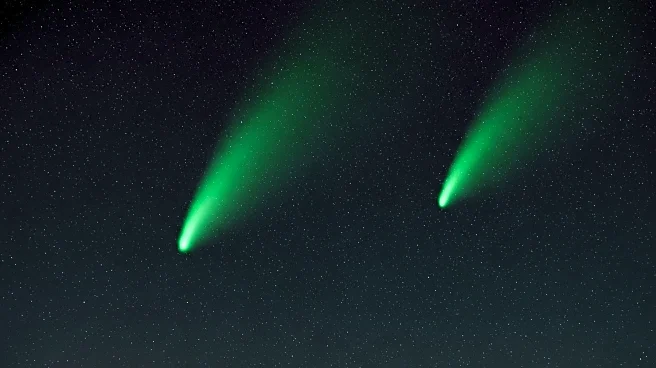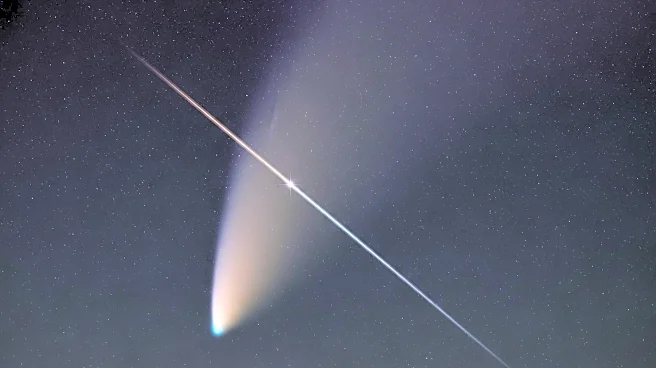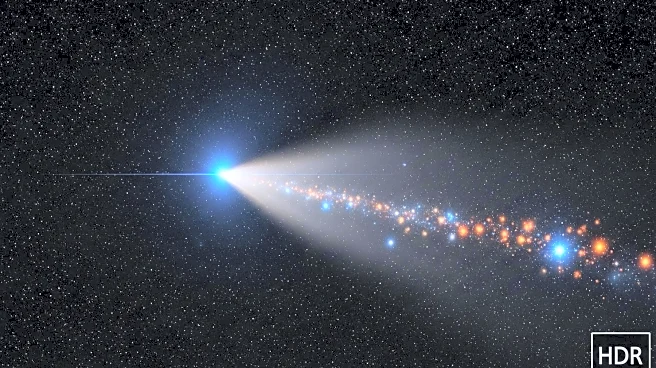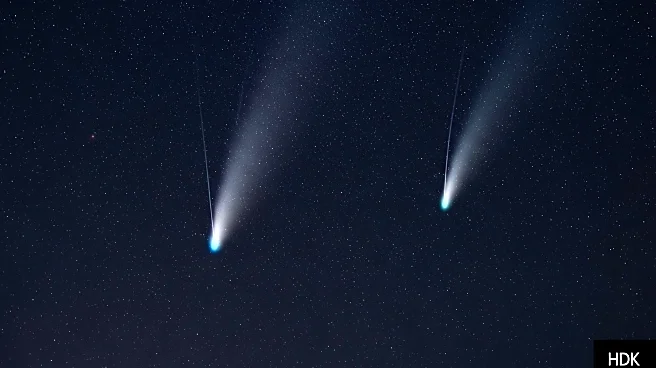What's Happening?
Comet C/2025 A6 (Lemmon) is rapidly brightening as it approaches its closest point to the sun, leading to excitement that it may be visible to the naked eye in mid-late October. Comet Lemmon's brightness is due to the vaporization of its icy deposits, creating a gaseous coma and tail that reflects sunlight. The comet is expected to be visible in the northeastern sky before dawn in early October and will transition to the evening sky by October 21. Its brightness trend suggests it could become a beautiful target for skywatchers using binoculars or telescopes.
Why It's Important?
The brightening of Comet Lemmon offers a rare opportunity for astronomers and enthusiasts to observe a comet that may be visible without the aid of telescopes. This event highlights the dynamic nature of comets and their interactions with solar energy, providing valuable insights into their composition and behavior. The visibility of Comet Lemmon may also inspire public interest in astronomy, encouraging educational activities and community events centered around this celestial phenomenon.
What's Next?
As Comet Lemmon continues to brighten, astronomers will monitor its trajectory and visibility. The comet's closest approach to Earth on October 21 will provide optimal viewing conditions, and enthusiasts are encouraged to take advantage of clear skies and minimal light pollution to observe it. The study of Comet Lemmon may contribute to ongoing research on cometary behavior and the solar system's dynamics.
Beyond the Headlines
The presence of Comet Lemmon highlights the dynamic nature of the solar system and the ongoing exploration of celestial phenomena. The study of comets can offer valuable information about the early solar system and the materials that contributed to its formation. Additionally, the public's interest in observing Comet Lemmon may foster a greater appreciation for astronomy and the scientific community's efforts to understand the universe.

